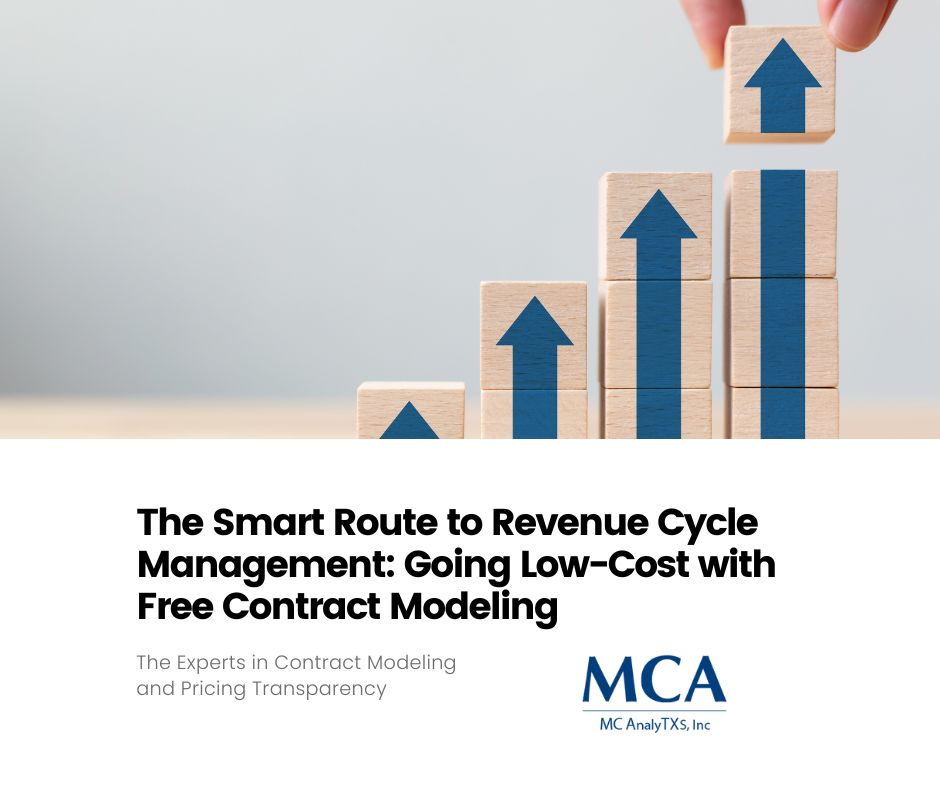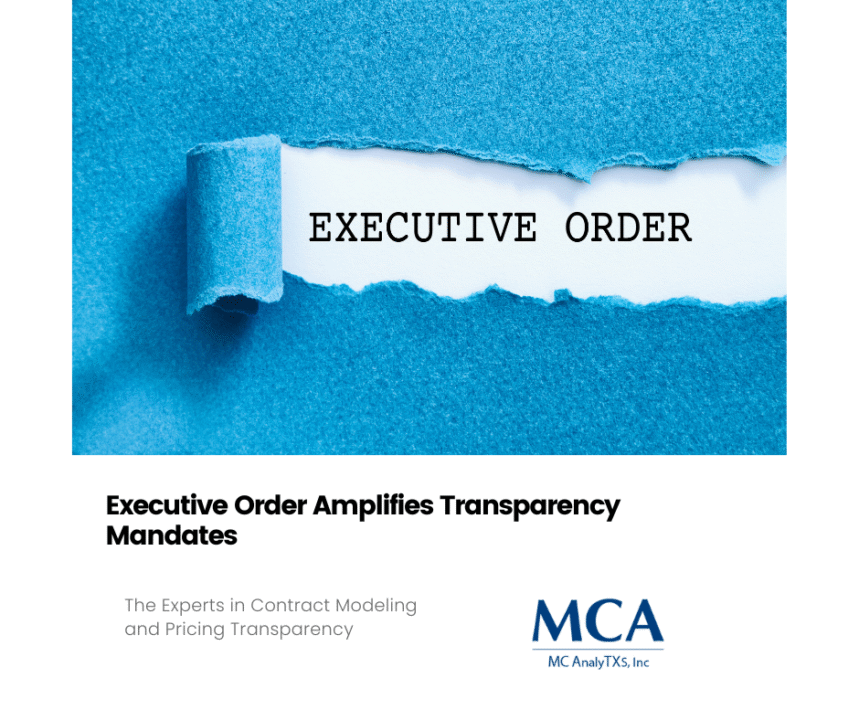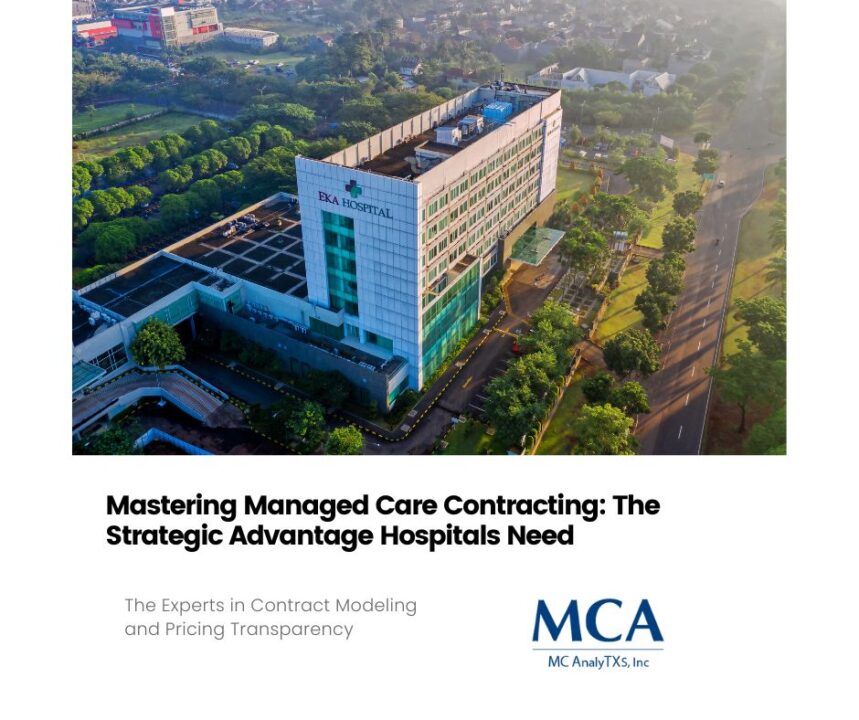
The Art of Revenue Recovery in the Healthcare Sector
April 10, 2024
A Finance Leader’s 2024 Playbook for Revenue Recovery
April 15, 2024Navigating the intricate webs of healthcare economics often feels akin to charting stars in a vast and unexplored cosmos. Among the most challenging constellations to decipher is the Revenue Cycle Management (RCM) arena. Daily, CFOS and revenue cycle managers grapple with cost-effective solutions that not only optimize revenue streams but also integrate effortlessly into existing healthcare IT ecosystems.
Enter the beacon in the night skies of RCM—low-cost solutions that infuse the often complex process with the simplest of offerings: free contract modeling. In this article, we’ll unearth why swapping your traditional RCM vendor for a more cost-effective counterpart that provides free contract modeling is not just a savvy financial move but also a revolutionary act that can spearhead a new era in your RCM strategies.
The Conundrum of RCM Vendors
At the heart of healthcare operations lies the necessity to preserve financial health, a task often delegated to RCM vendors. These partners in prosperity wield software solutions that streamline the claims processing system, enhance billing accuracy, and reduce the throughput time for payments. Yet, the relationship with RCM vendors has been fraught with complications.
Higher-than-expected costs, laggard innovations, and rigid contract structures often overshadow the initial promises of these vendors. Traditional RCM solutions tend to prioritize on-premise systems or proprietary platforms, relegating the healthcare institution to an awkward tango between outdated legacy systems and the shiny new technologies of the current day.
Why Free Contract Modeling Is Not Just a Perk
Free contract modeling isn’t simply a tempting perk to lure organizations into the fold of low-cost RCM solutions. It’s a strategic lever that can unlock hidden revenue streams and optimize the end-to-end billing processes with unparalleled efficacy.
It’s All About Visibility and Control
Instituting free contract modeling within RCM software empowers healthcare providers with an unprecedented level of visibility into their payer contracts. Clauses that previously remained underutilized or obscure can now be unpacked and strategically leveraged to ensure optimized reimbursements.
Rapid Adaptation and Scalability
Free contract modeling also entails the capacity for rapid adaptation to changes in the healthcare landscape. New regulations or payer guidelines can be swiftly assimilated into the modeling, ensuring that the RCM strategy remains dynamically aligned with the financial objectives of the organization.
Data-Driven Decision Making
The AI and machine learning underpinnings of these free contract modeling tools imbue the RCM with a robust data-driven decision-making capability. Past performance analyses and predictive modeling can guide your RCM strategy with surgical precision, ensuring that every contractual clause is exploited to the fullest potential.
The ROI on Free Contract Modeling
The case for free contract modeling is not just laden with promises of better functionalities; it also champions a compelling return on investment (ROI) narrative. Here’s a snapshot of how your organization’s financial ledger could reap the benefits of this free feature:
Eliminating Hidden Costs
The inclusion of free contract modeling eliminates the sometimes opaque costs associated with outsourced contracting services or bundled services offered by traditional RCM vendors. By demystifying and nullifying such costs, organizations can direct those funds to more strategic initiatives, such as patient care and experience enhancements.
Optimizing Manpower
Efficiencies in contract modeling translate to less time spent and fewer resources allocated to this crucial task. Rather than relying on manual or rudimentary systems, your staff can be redeployed to areas that necessitate human expertise, thereby maximizing their potential and satisfaction within the organization.
Enhancing Revenue Capture
The marriage of free contract modeling with cutting-edge RCM solutions has a singular objective—enhanced revenue capture. By ensuring that every contractual stipulation is implemented and monitored rigorously, organizations stand to boost their revenue, often by margins that more than justify the pivot to a low-cost RCM alternative.
Ensuring a Seamless Transition
The transition to a low-cost RCM solution that champions free contract modeling might seem daunting, but with the correct roadmap, it can be seamless. Ensuring that the selected solution aligns with the organization’s existing IT infrastructure and operational protocols is key. Training and change management processes should also be prioritized to guarantee a smooth transition and optimal utilization of the new system.
The Social and Ethical Impacts
Beyond the quantifiable benefits lies a profound social and ethical narrative. By opting for low-cost RCM solutions, organizations contribute to a distributive model within healthcare. They advocate for egalitarian access to cutting-edge healthcare management tools, fostering a more inclusive ecosystem for providers and, ultimately, for patients.
In Conclusion
The industry adage “healthcare at a crossroads” couldn’t be truer than when appraising the RCM landscape. By choosing to replace your RCM vendor with a low-cost alternative that bestows you with free contract modeling, you’re not just making a financial decision; you’re choosing a partner that aligns with the spirit of innovation and adaptability that is quintessential to healthcare’s sustainable future.
This pivot to savvy, cost-effective solutions is more than being frugal; it’s about carving a path of progress that is inclusive, equitable, and forward-thinking. The stars of RCM are aligning, and the time to chart a new course is now—guided by solutions that promise a bright and cost-efficient trajectory for providers in the healthcare space.





